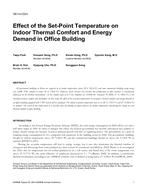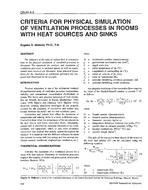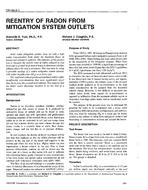A Tennessee utility has completed six years of wood combustion research related to thermal efficiencies, stack emissions, and indoor air quality influences for many different types of conventional and catalytic wood heaters. Stack emissions and thermal efficiencies for two new-technology wood-fired boilers were also investigated extensively. The results for each phase of this research were reported in TVA and ASME, ASHRAE, APCA, WHA, and International Symposium for Polynuclear Aromatic Hydrocarbon presentations. The findings of the research were used by Oregon DEQ and DOE in developing wood heater certification programs.
Important facts gleaned from a broad review of previously reported results have provided additional information that reveals links between thermal output and efficiencies; stack emissions of carbon monoxide (CO), particulates, and polynuclear aromatic hydrocarbons (PAH); and indoor air quality influences (CO, PAH, and particulates) that are of major concern to the residential user, manufacturer, and regulatory agencies. For example: (1) Should a homeowner burn very large versus intermediate or smaller wood loads in a conventional wood heater in order to maximize the heat output for low burn rate firings? (2) Should a homeowner expect a new catalytic wood heater, capable of meeting Oregon’s stack gas certification program, to generate less indoor air quality problems than older conventional wood heaters? (3) To what extent are the indoor air quality influences related to operator techniques used in reloading the wood fuel? These points as well as others will be discussed in the paper.
Units: Dual
Citation: Symposium, ASHRAE Transactions, 1988, vol. 94, pt. 1, Dallas, TX
Product Details
- Published:
- 1988
- Number of Pages:
- 13
- File Size:
- 1 file , 1.3 MB
- Product Code(s):
- D-DA-88-11-1


